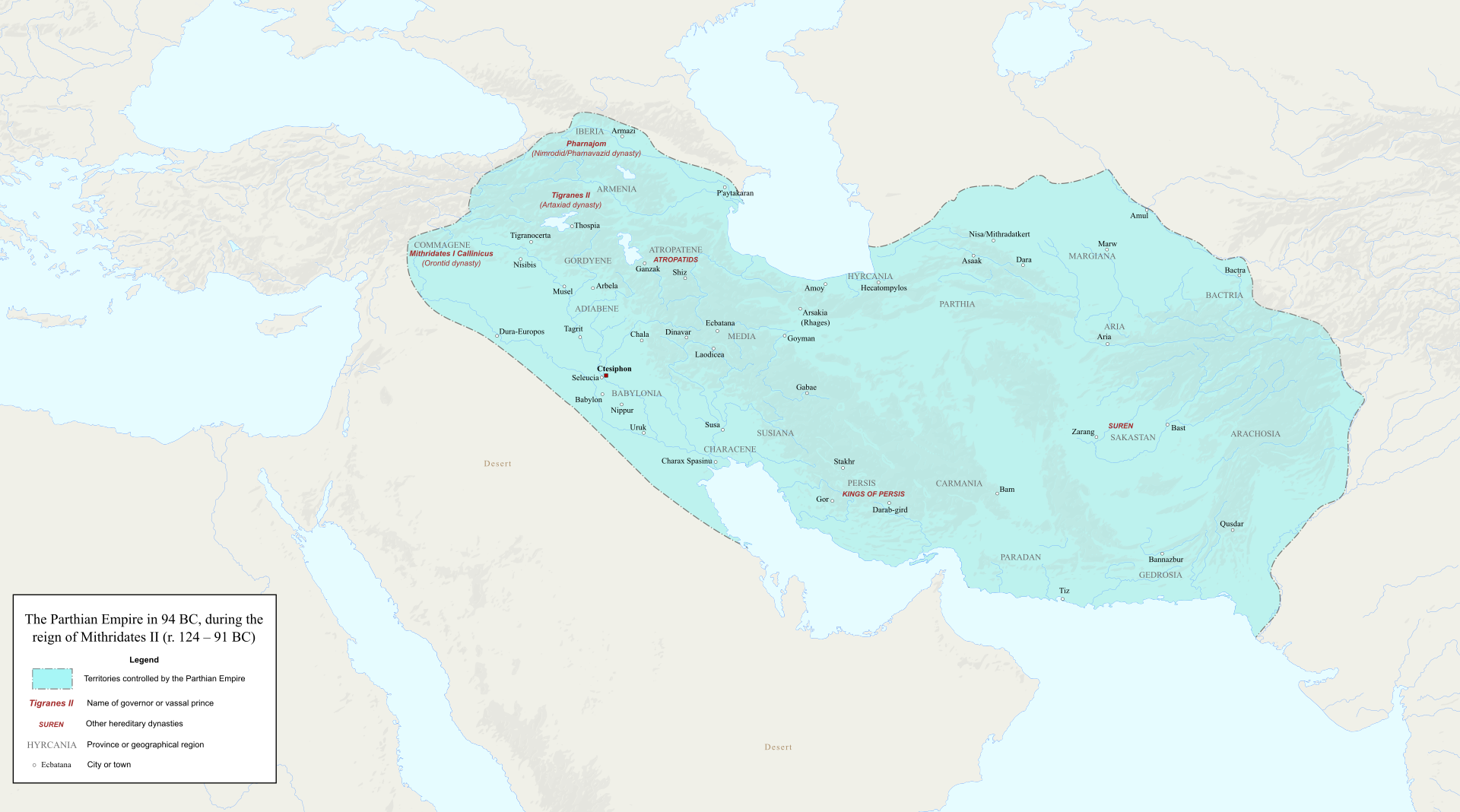PARTHIAN PERIOD
(In Iraq: 139 B.C. 226 A.D.)
The Parthians seem to have first made thier appearance in history in northeasterm Iran, and from there broke through towards the south and west. Under their leader Arsaces, founder of the dynasty, they drove the Seleucids out of Iran, and established an independent kingdom there with its capital city at Echatana (250 B.C.). Arsarm wae succeeded on the throne by his brother, and thereafter the Parthian kings of the Anand Dynasty were in continual conflict with the Seleucids. In 139 B.C. Mithridates I (170-138 B.C.) conquered Mesopotamia, which had been under the rule of the king Antiochus VII. and so brought to an end the rule of the Seleucid Dynasty in Iraq. The Parthians adopted Seleucia as their winter residence, and the city expanded on the left bank of the river, making a part of the town which was later known as Ctesiphon. The Parthian rulers of Iraq and Iran continued to engage in hostilities with the Seleucids, now hased in Syria, and also faced a threat from the incursions of nomadic tribes in the north of Iran.
After the fall of the Seleucid kingdom in Syria, the Parthians’ new opponents in the west were the better organised Roman armies, and several encounters took place arising from rivalry over the control of the caravan routes on the Euphrates and acros the Syrian Desert. The most famous of these encounters was the Battle of Carrhae (Harran), in 53 B.C., between the Parthian Orodes and the Roman general Crammus which ended in the complete annihilation of the Roman force and the death of Crassus There ensued a protracted struggle between the two empires, details of which need not be given here; peace was eventually arranged in the time of Augustus, but under Trajan (Ulpius Trajanus), a soldier by breeding and disposition, more bitter fighting broke out between the Parthians and Romans, and the Roman emperor conquered most of the western dominions of Parthia, occupying Ctesiphon itself. For more than a century thereafter the armies of Rome and Parthia contested the lands of Mesopotamia, and the struggle was finally resolved only with the famous battle of Nisibin in which the Parth
ians were defeated. During the Parthian period various cities came to prominence in the desert of western Iraq and Syria, which served as centres for the flourishing Arab trade cars vans. One of these was Petra, near Aqaba, ringed by mountains which serve as a strong natural fortification. This was the capital city of the Nabataean kings, including in the 2nd century B.C. Al-Harith and Abada. In 109 A.D. the city was conquered by the Roman Emperor Trajan, and it allied itselfthenceforth with Rome.
A second city founded during the Parthian era was Hatra, which is situated in nor thern Iraq, on the Wadi Tharthar between the Tigris and Euphrates. Hatra controlled the trade routes of the northern desert, and held a strategic position between the opposing lates of Rome in the West and Parthia in in the East. It seems probable that the city was founded before the 2nd century B.C., and it continued to hold sway in the desert until about the middle of the 3rd century A.D. The city proper and the surrounding area, known by the Aramaic designation of “Arabaya”, were ruled after the 1st century B.C. by an Arab dynasty. Among its most celebrated kings was Sanatruq I, the son of Nasru the chief priest of the city. Sanatruq was perhaps contemporaneous with the
Parthian king Vologas and his som Sanatru 11. forumion of mine who Paruded Abed Sanya a king of Hatra, according to Arab noveled with in the Arabs”. The laat kingsleged and iording to Arab recorde, was Al-Dhayvan King ofhose reign the city hereafter the power of Hatral captured by the Samanian Ser in 240 or 241 A.D. Thereater the power of Hatra was completely broken 1 in lished from history. More will be said about the city in our guide to the Hatreme Hall (no. XVI).
Faraj Basmachi + Iraq Museum


